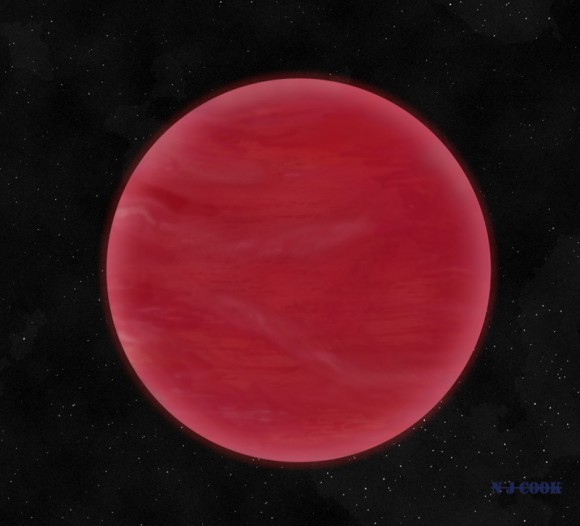| Online: | |
| Visits: | |
| Stories: |

| Story Views | |
| Now: | |
| Last Hour: | |
| Last 24 Hours: | |
| Total: | |
Surprise! Brown Dwarf Star Has Dusty Skies, Appearing Strangely Red

Artist’s impression of brown dwarf ULAS J222711-004547, which has a very thick cloud layer of mineral dust. The dust is making the brown dwarf appear redder than its counterparts. Credit: Neil J. Cook, Centre for Astrophysics Research, University of Hertfordshire
Dust clouds on a brown dwarf or “failed star” are making it appear redder than its counterparts, new research reveals. Better studying this phenomenon could improve the weather forecast on these objects, which are larger than gas giant planets but not quite big enough to ignite nuclear fusion processes to become stars.
“These are not the type of clouds that we are used to seeing on Earth. The thick clouds on this particular brown dwarf are mostly made of mineral dust, like enstatite and corundum,” stated Federico Marocco, who led the research team and is an astrophysicist at the United Kingdom’s University of Hertfordshire.
(…)
Read the rest of Surprise! Brown Dwarf Star Has Dusty Skies, Appearing Strangely Red (267 words)
© Elizabeth Howell for Universe Today, 2014. |
Permalink |
No comment |
Post tags: brown dwarf, University of Hertfordshire, Very Large Telescope
Feed enhanced by Better Feed from Ozh
Source: http://www.universetoday.com/109091/surprise-brown-dwarf-star-has-dusty-skies-appearing-strangely-red/



